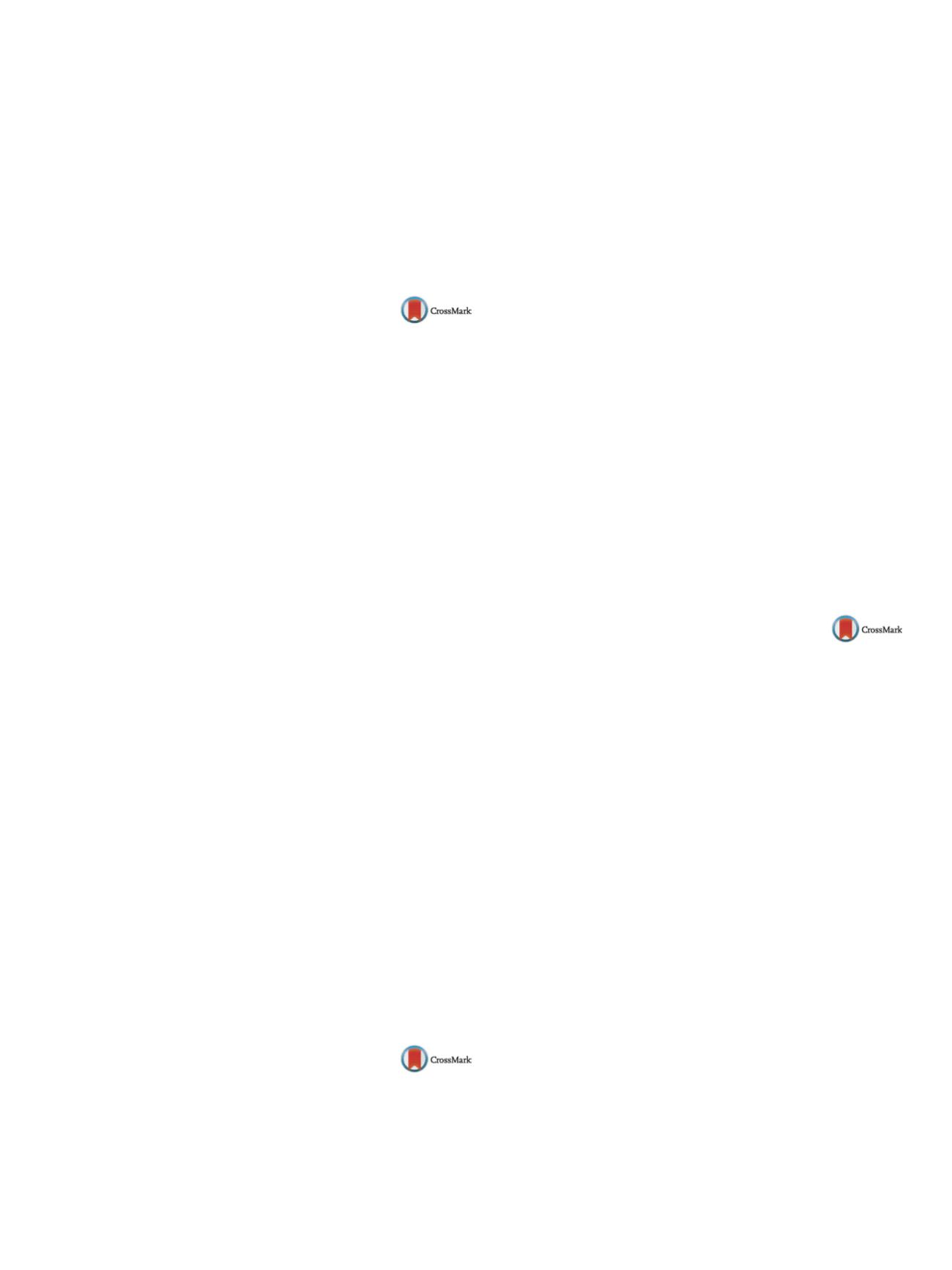

25th European Congress of Psychiatry / European Psychiatry 41S (2017) S521–S582
S527
larmajor depression, among psoriatic patients. Depressive disorder
with the presence of psoriasis may constitute a separate etiology
with a greater contribution of early environment.
Disclosure of interest
The author has not supplied his/her decla-
ration of competing interest.
References
[1] Shea et al. (2005).
[2] Pariante and Lightman (2008).
[3] Hall et al. (2012).
http://dx.doi.org/10.1016/j.eurpsy.2017.01.707EV0378
Modifications of depression-like
behavior in the adult ovariectomized
female rats treated with different
doses of cholecalciferol
J. Fedotova
1 , 2 ,∗
, T. Dudnichenko
31
I.P. Pavlov Institute of Physiology RASci, Laboratory of
Neuroendocrinology, St. Petersburg, Russia
2
I.M. Sechenov Institute of Evolutionary Physiology and Biochemistry
of RASci, Laboratory of Comparative Somnology and
Neuroendocrinology, St. Petersburg, Russia
3
North-Western State Medical University named after I.I. Mechnikov,
Department of Obstetrics and Gynecology named after S.N. Davydov,
St. Petersburg, Russia
∗
Corresponding author.
The aim of the preclinical study was to examine the effects of
chronic the effects of chronic cholecalciferol administration (1.0,
2.5 or 5.0mg/kg/day, s.c., once daily, for 14 days) on depression-like
behavior following ovariectomy in rats. Cholecalciferol was admin-
istered to the ovariectomized (OVX) rats and OVX rats treated
with 17 -estradiol (17 -E
2
, 0.5 g/rat, s.c., once daily, for 14 days).
Depression-like behavior was assessed in the forced swimming test
(FST) and the spontaneous locomotor activity was assessed using
the open field test (OFT). Treatment with cholecalciferol in high
dose (5.0mg/kg/day, s.c.) significantly decreased immobility time
of OVX rats in the FST. Co-administration of cholecalciferol in high
dose with 17 -E
2
exerted a markedly synergistic antidepressant-
like effect in the OVX rats on the same model of depression-like
behavior testing. Cholecalciferol in high dose administered alone or
together with 17 -E
2
significantly enhanced frequency of groom-
ing of theOVX rats in theOFT. Moreover, cholecalciferol inhighdose
administered alone or togetherwith 17 -E
2
significantly decreased
the elevated corticosterone levels in the blood serum of OVX rats
following the FST. These results indicate that cholecalciferol in high
dose has a marked antidepressant-like effect in the adult female
rats with low levels of estrogen. The data also indicate that the
combination of cholecalciferol in high dose and 17 -E
2
is more
effective than 17 -E
2
alone in OVX rats inducing a more profound
antidepressant-like effect in the FST.
Russian Science Foundation (RSF) funded the reported study
accordingly to the research project
№
16-15-10053.
Disclosure of interest
The authors have not supplied their decla-
ration of competing interest.
http://dx.doi.org/10.1016/j.eurpsy.2017.01.708EV0379
Does committed action act as a buffer
against the impact of shame on
depression?
C. Ferreira
∗
, J. Marta-Simões , I.A. Trindade , A.L. Mendes
Faculty of Psychology and Education Sciences University of Coimbra,
CINEICC, Cognitive Behavioural Centre for Research and Intervention,
Coimbra, Portugal
∗
Corresponding author.
Committed action is defined as the ability to take action guided by
personal life values, i.e., to be persistent in valued behaviours even
when such pursuit implicates facing setbacks and experiencing
discomfort. This is a key process for acceptance and commitment
therapy, and is linked to several positive mental health outcomes.
Although current literature has stressed the pervasive impact of
shame on psychopathology, especially on depression, data con-
cerning the role of committed action on the impact of shame on
depression is considered insufficient. Considering these premises,
the current study intended to explore the moderator role of com-
mitted action in the relationship between external shame and
depressive symptomatology, in an adult sample of 178 participants
of both sexes. Path analysis’ results showed that shame holds a pos-
itive effect on depression (
ˇ
= 1.19,
P
< .001), and that committed
action serves as a moderator of the effect of shame on depression
(
ˇ
= –.63,
P
< .010). The tested model accounted for 45% of the vari-
ance of depression symptoms. A graphical representation allowed
to observe that committed action presents a buffer effect for the
harmful impact of shame on symptoms of depression. That is, at
any level of shame experienced, those individuals who revealed
higher levels of committed action showed less depression symp-
toms. This study has corroborated the powerful effect of external
shame on depression symptoms, which was found to be buffered
by committed action. The present findings thus highlight the perti-
nence of identifying personal life values andmotivating committed
action, particularly in prevention and intervention programs for
depression.
Disclosure of interest
The authors have not supplied their decla-
ration of competing interest.
http://dx.doi.org/10.1016/j.eurpsy.2017.01.709EV0380
Depression and chronic immune
system dysfunction–a longitudinal
study in patients with lupus
M. Figueiredo-Braga
1 ,∗
, M .Bernardes
2 , M.Figueiredo
1 ,G. Terroso
2 , B. Poole
31
Faculty of Medicine, University of Porto, Clinical Neurosciences and
Mental Health, Porto, Portugal
2
Hospital of São João EPE, Rheumatology Department, Porto,
Portugal
3
Brigham Young University, Department of Microbiology and
Molecular Biology, Provo, USA
∗
Corresponding author.
Introduction
Depression is a common companion of systemic
lupus erythematosus that substantially contribute to patient’s suf-
fering and a decreased quality of life. The relationship between
depressive symptoms and disease immune processes is not well
understood.
Objectives
To further understand the relationship between lupus
and depression, a patient cohort was examined for correlations
between clinical presentation, biological parameters and psychoso-
cial evaluation.
Methods
Seventy-two lupus patients were screened for depres-
sive symptoms, clinically and psychologically characterized using a
battery of instruments, including assessments for depression, anxi-
ety, fatigue, pain and overall health. Scores from these assessments
were correlated with lupus clinical profile and biological parame-
ters namely the immune profile.
Results
Forty-two percent of the patients had scores indicative
of depression using the HADS Depression scale. Strong correlation
was found between pain and depression. Moderate correlation was
found between several lupus symptoms, such asmouth ulcers, rash,
and arthritis, and psychological evaluation. There was low to mod-
erate correlation between complement levels, C-reactive protein
and psychological indicators, but no other lab tests correlated well
with the psychological tests.


















